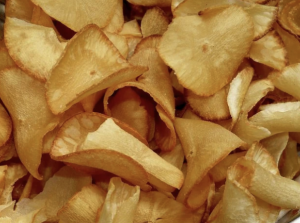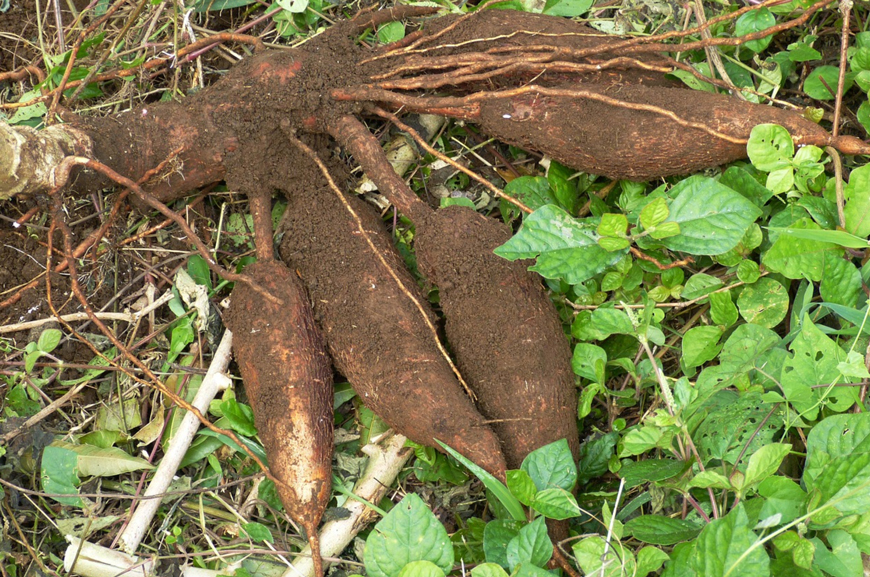Cassava. Yuca. Manioc. Tapioca. Manihot esculenta.
Known around the world by a variety of names, cassava — as we call it in Trinidad and Tobago — is the third largest source of carbohydrates in the world and is a staple food for more than 500 million people.
Among crop plants, the cassava plant provides the highest yield of food energy per cultivated area per day, next to sugarcane.
Together with other tropical roots like yam, plantains, and potato; cassava is an integral part of the diet in many Caribbean, African, Asian and South American countries.
Cassava offers many health benefits because of its vitamin, mineral and fibre content.
Health Benefits
Cassava is loaded with carbohydrates, including the especially beneficial carbohydrate dietary fibre. Consuming fibre is linked to a number of health benefits, including lowered blood pressure, reduced cholesterol levels, better control over your blood sugar levels and a lower risk of obesity.
Cassava also helps you consume more magnesium and copper, which helps to lower your blood pressure and reduce your risk of osteoporosis, and to support healthy nerve function.
Cassava contains a signifiant percentage of the recommended requirement for Vitamin C and Folate, which protects against colon cancer, reduces the risk of complications during pregnancy and offers protection against coronary heart disease and several types of cancer.
Cassava flour does not contain gluten, an allergenic protein found in wheat, barley, oats and rye. Also known as tapioca flour, it can be used by gluten intolerant people to replace wheat flour in bread, cake, cookies, etc.
Nutrition Facts
Each cup of cassava contains 78 grams of total carbohydrates. Carbohydrates provide 4 calories per gram, so cassava gets 312 of its 330 calories, or 95 percent, from carbohydrates.
A serving of cassava contains 3.7 grams of dietary fibre, or 15 percent of the daily value. Cassava also provides 42 milligrams of vitamin C, or 70 percent of the daily value.
It provides 56 milligrams of folate, or 14 percent of the daily value. Each cup of cassava supplies 558 milligrams of potassium, which helps lower blood pressure. Cassava is low in sodium, with only 29 milligrams of sodium per cup.
A cup of cassava contains 206 micrograms of copper, or 23 percent of the copper you need each day. Cassava also increases your manganese intake by 0.8 milligram per serving — more than one-third of the daily requirement for men and 44 percent for women.
Serving & Storage Tips
Buy well-formed, hard, cylindrical tubers that are heavy for their size. Avoid tubers that feature cuts or breaks in the skin, or those with mould, soft spots, and blemishes.

Fresh roots can be kept at room temperature for about 5-7 days. However, peeled and cut sections should be placed in cold water and stored inside the refrigerator for up to three days.
You must only eat cassava after it has been cooked to avoid exposure to toxic chemicals called cyanogenic glucosides. Cooking your cassava by roasting or boiling reduces these compounds to safe levels.
Boil the cut sections in water until tender with sea salt added for about 10-15 minutes. Drain and discard the water before using boiled cassava in various cooking recipes.
Prepare cassava similarly to how you’d prepare potatoes.
Try peeling it and cutting it into chunks, and then roast it, coated lightly in olive oil. Alternatively, boil pieces of peeled cassava and then mash for a dish similar to mashed potatoes. If you want to add more flavour, try mixing the mashed cassava with roasted garlic, or mash it with boiled carrots to add natural sweetness.
Cassava tubers are popular ingredients in fries, stew-fries, soups, and savory dishes; as well as in chips or flakes as a snack.

